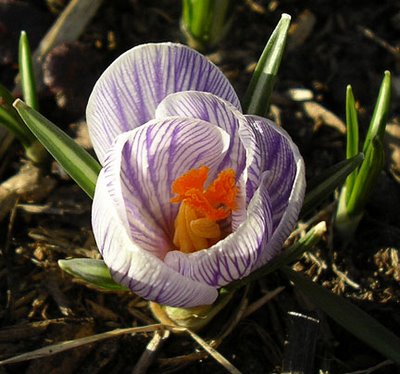
So I'm trying to pay attention: to the birds as they arrive, as they start to establish their territories; and to the year-round residents, when they start their breeding activities.
Singing Monday morning: American robin, purple finch, song sparrow, cardinal, junco, red-winged blackbird, mourning dove, ruffed grouse (drumming), northern flicker (also first seen). Also heard, not necessarily territorial singing: grackles, blue jays, goldfinches, redpolls, chickadees, starlings, crows, Canada geese, killdeer. Then there was the thrushy sring (not a whole song) I heard at the end of the day on a visit to Vanderwater Conservation Area. Hermit thrush maybe?
Yesterday I saw and heard the first brown-headed cowbird (male, females generally turn up a little later). Do they always sing as soon as they arrive?
I heard the first singing song sparrow just a few of days ago--now there are several apparently on territory through the fields.
This morning a pair of starlings are making the first serious, i.e., protracted, search for a nesting cavity. This activity may continue intermittently for a while before they settle in somewhere--and some may be lost due to bad choices. One year we had one in the basement that came down the furnace chimney. It was lucky to survive that, and that we were able (with some difficulty) to get it outside.
The year-rounders are more difficult to follow--seems wrong that I understand them less well, when I feel I know them so well. At some point in the spring--hard to pinpoint exactly--the chickadees and the blue jays in particular go quiet. I had a pair of blue jays nest in a tree just up by the shed one year, and I noticed nothing until they were feeding young. Chickadees have gotten by me the same way--taken over a nesting box, built a nest, raised young, and I only noticed when the fledglings began to emerge.
It seems possible that juncos will nest in or near the yard this year (this would be a first), since one has been singing from high perches for the last several days all around the yard. The junco has a nice trilling song, one I hadn't heard (or maybe hadn't noticed) before, that they sing in that classic territorial way. The problem with the blue jays and chickadees is that they each have so many vocalizations that they use so often, I can't pick out one that signals an attempt to establish a nesting territory, if there even is one. I used to think that the descending two-note chickadee song was the one--but I have read that this is actually used to establish hierarchy in the flock. Maybe some of the bluejay calls are about something like this as well.
Goldfinches present the same problem with the additional twist that they nest so late that my attention is usually engaged with watching for food-carrying and fledglings when they're just getting started. The goldfinches ae still in flocks, though considerably smaller just now than they were for most of the winter, and they do seem to be singing, as well as chattering among themselves as they do all winter. But at some point, June?, July? they presumably pair off for nesting. I usually only notice when the fledglings emerge.
There are more early migrants to come, meadowlark, tree swallow, bluebird spring to mind. Then the wood warblers and others arrive, and the place goes crazy.







1 comment:
Great post... I am listening also - A Carolina Wren sat just outside my window and serenaded the morning, the white-throats and fox sparrow are calling to one another while the cardinal sits on the highest perch as though trying to lead the chorus.
What a delight to watch the birds arrive with the spring.
Post a Comment